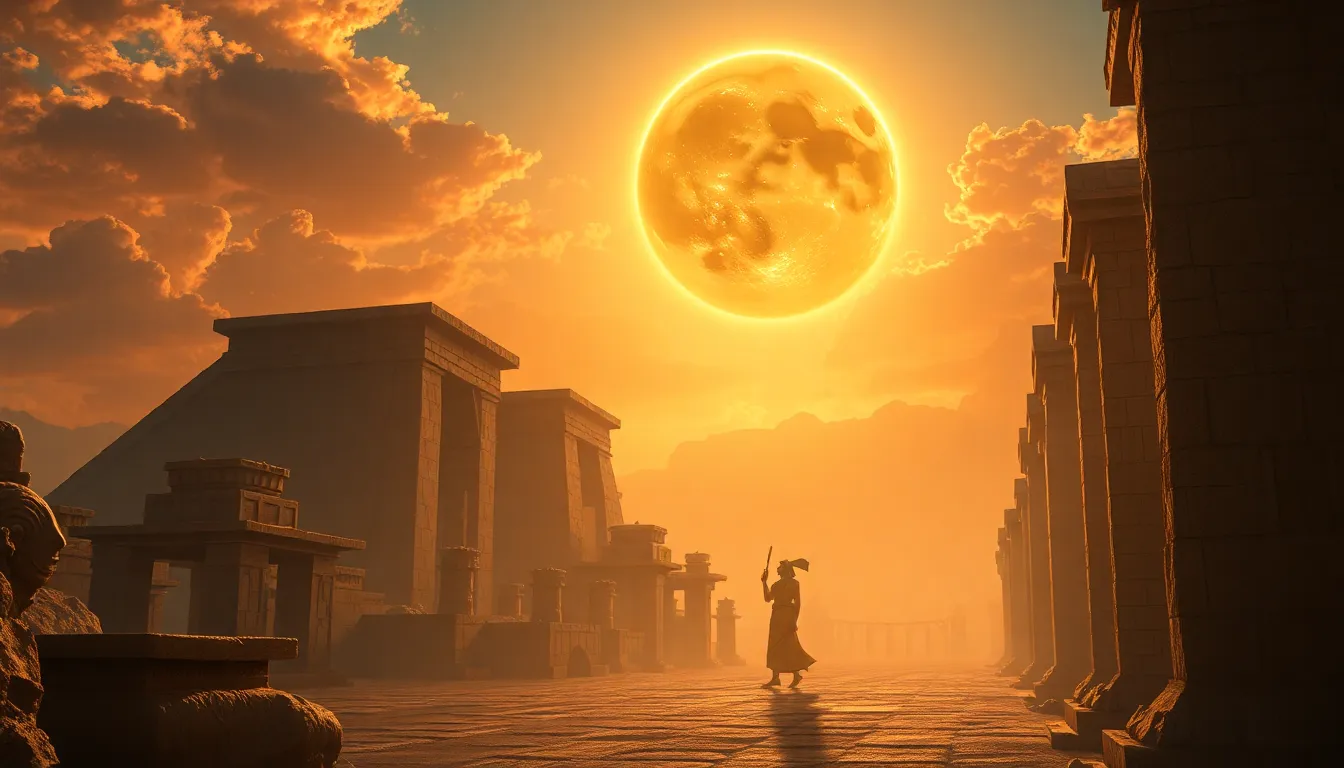The Story of the First Light: Ra and the Origins of Day
I. Introduction
Ancient Egyptian mythology is a complex tapestry woven from stories, deities, and cosmological beliefs that reflect the values and experiences of the ancient Egyptians. Central to this mythology is Ra, the sun god, who occupies a preeminent place in the pantheon of Egyptian deities. As the embodiment of the sun and light, Ra’s significance extends far beyond mere symbolism; he represents the very essence of life and order in the universe. This article delves into the legend of Ra and explores the creation of day, illuminating his journey from primordial chaos to the daily emergence of light.
II. The Myth of Ra: An Overview
Ra is one of the most important gods in ancient Egyptian mythology, revered as the creator deity and the source of life. His attributes and symbolism are rich and varied:
- Attributes and symbolism: Ra is often depicted with a falcon head, crowned with a sun disk encircled by a serpent, symbolizing his power and authority. He embodies the sun’s life-giving rays and is associated with warmth, growth, and fertility.
- Ra’s role in the Egyptian pantheon: As the king of the gods, Ra governs the heavens and Earth, ensuring the balance of life. He is often associated with other deities, particularly Osiris, Isis, and Horus.
The sun held immense significance in ancient Egypt, representing not only physical light but also spiritual illumination, order, and the cycle of life itself. This reverence for the sun underscores the importance of Ra in Egyptian cosmology.
III. The Creation of the World
The creation myth of Ra begins in the primordial chaos known as Nun, a vast ocean of nothingness. In this chaos, Ra emerged as the first being:
- The primordial chaos: Nun: Nun represents the infinite waters from which all creation springs. It is a state of disorder and potentiality.
- Ra’s emergence from the waters of Nun: From this chaos, Ra arose as a self-created deity, often depicted as a radiant sun rising above the waters.
- The creation of the first land: The emergence of the Benben stone: Ra’s first act was to create the Benben stone, the primeval mound of Earth, symbolizing stability and the foundation of the world.
IV. Ra’s Journey Across the Sky
Ra’s daily journey across the sky is a central theme in Egyptian mythology, representing the cycle of day and night:
- The daily cycle of Ra: Each day, Ra travels from the east at dawn, reaching his zenith at midday, and descending into the west at sunset.
- The symbolism of light and darkness: Ra’s journey symbolizes the eternal struggle between light and darkness, life and death. Light is associated with truth and order, while darkness represents chaos and ignorance.
- Ra’s battles with the forces of chaos (Apep): Each night, Ra must battle Apep, the serpent of chaos and darkness, to ensure the sun rises again. This struggle embodies the themes of renewal and resilience.
V. The Birth of Other Deities
Ra’s influence extends beyond himself, as he is credited with the birth of other important deities:
- The offspring of Ra: Shu and Tefnut: Ra created Shu, the god of air, and Tefnut, the goddess of moisture. Together, they represent the duality of existence and the balance of elements.
- The role of other gods in the cycle of day and night: Shu and Tefnut’s children, Geb (Earth) and Nut (Sky), further illustrate the interconnectedness of the gods and the natural world.
- The interconnections between Ra and other Egyptian deities: Ra’s relationships with deities like Osiris and Horus highlight the collaborative nature of Egyptian mythology, where gods often work together to maintain cosmic order.
VI. Ra’s Influence on Ancient Egyptian Culture
Ra’s impact on ancient Egyptian culture is profound and multifaceted:
- Worship practices and temples dedicated to Ra: Temples such as the Temple of Karnak were built in his honor, where rituals and offerings were made to ensure his favor and the continuation of life.
- The representation of Ra in art and literature: Ra is frequently depicted in tomb paintings, sculptures, and texts, symbolizing his role as a protector and the giver of life.
- Ra’s legacy in modern interpretations of Egyptian mythology: Today, Ra continues to be a symbol of light and divinity, influencing modern literature, art, and popular culture.
VII. The Philosophical and Spiritual Significance of Ra
Ra’s mythology carries deep philosophical and spiritual meanings:
- The concept of duality: Light vs. darkness: Ra’s journey embodies the balance between opposing forces, teaching the importance of harmony in life.
- Ra as a symbol of rebirth and renewal: Each sunrise signifies a new beginning, a theme central to ancient Egyptian beliefs about life, death, and the afterlife.
- The impact of Ra’s mythology on beliefs about life and death: Ra’s daily resurrection reinforces the idea of immortality and the cyclical nature of existence, influencing funeral practices and beliefs in the afterlife.
VIII. Conclusion
In summary, Ra plays a pivotal role in the origins of day, embodying the light that dispels darkness and chaos. His mythology not only explains the natural phenomena of the sun’s journey but also reflects profound truths about life, balance, and the human experience. The enduring legacy of Ra continues to resonate in contemporary culture, reminding us of the importance of myth in understanding our place in the universe. Through the lens of Ra, we appreciate the complexities of existence, the interplay of light and darkness, and the timeless narratives that shape our world.




